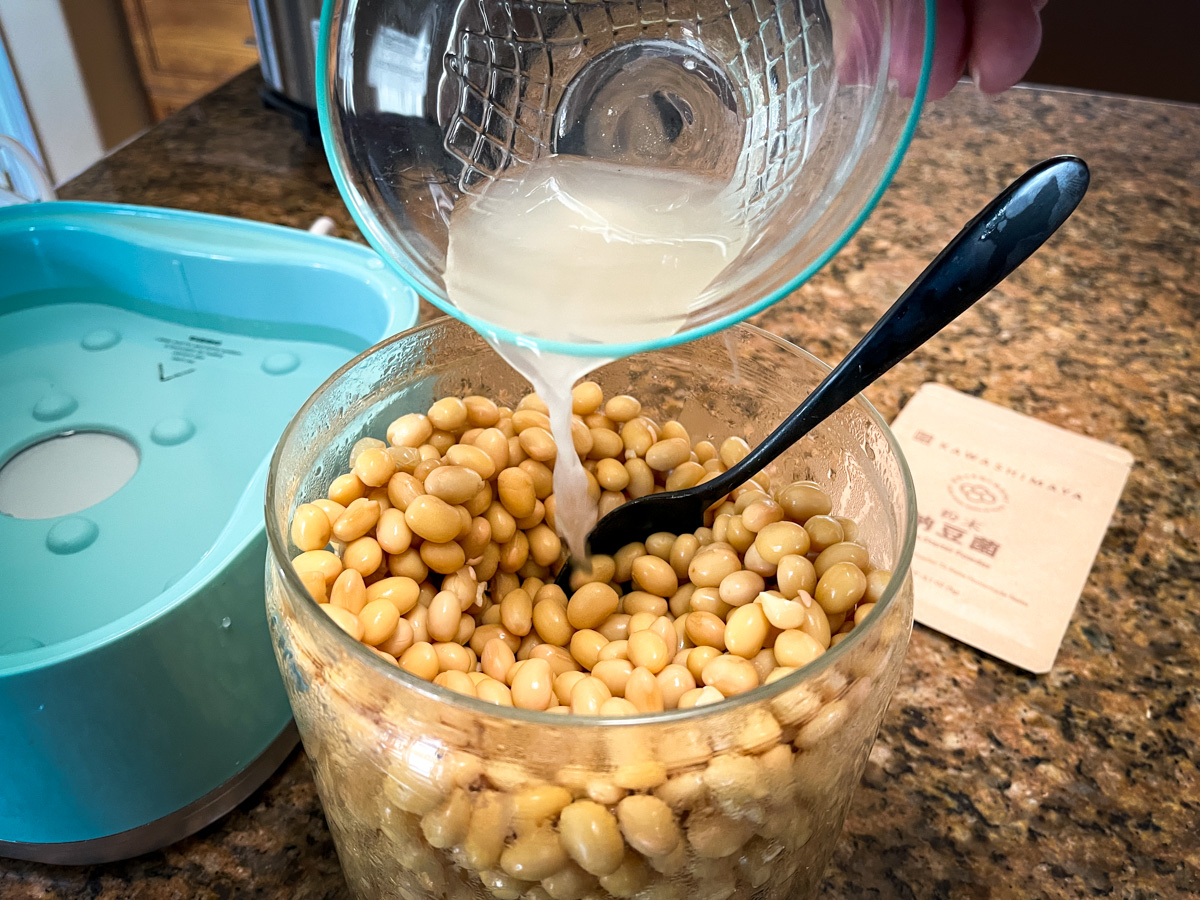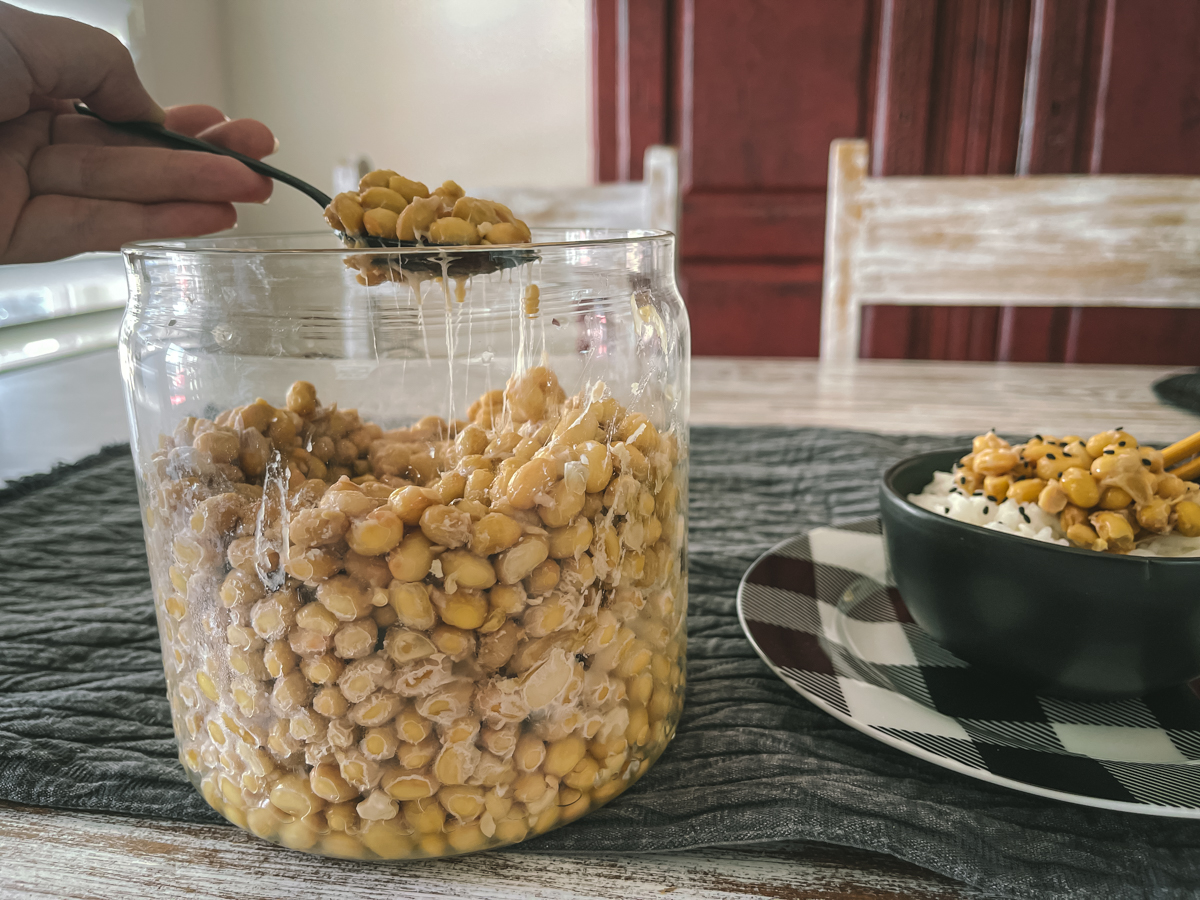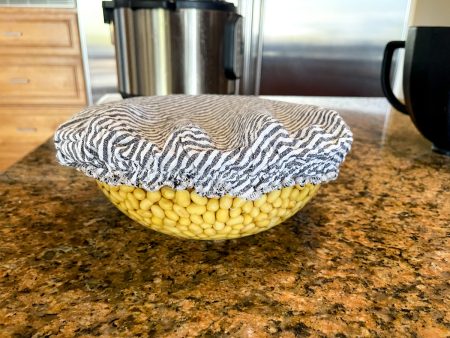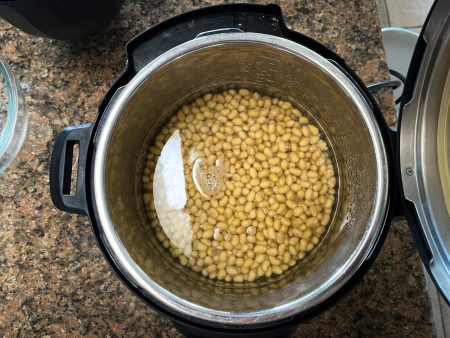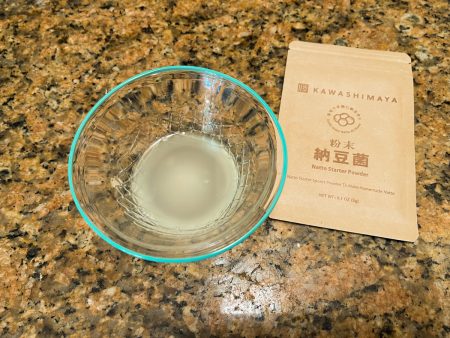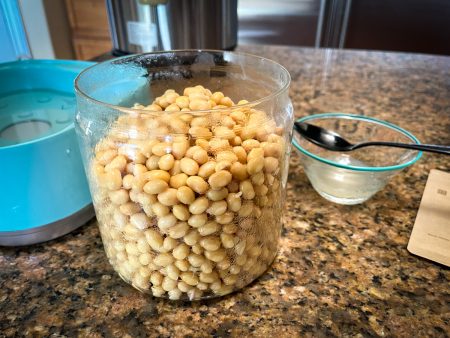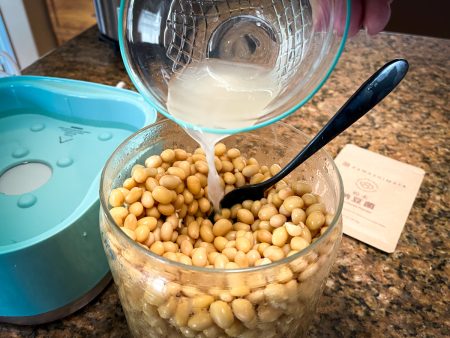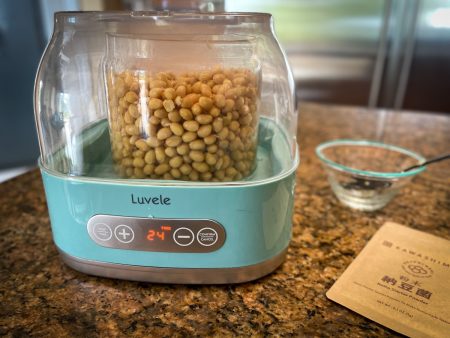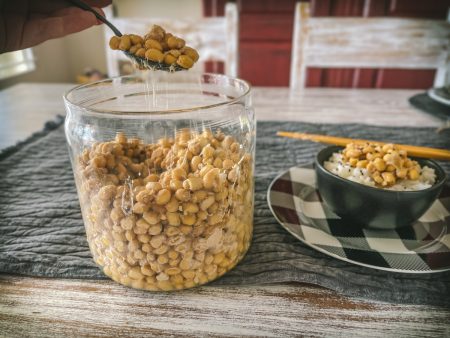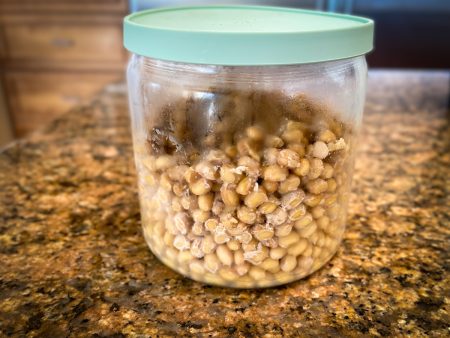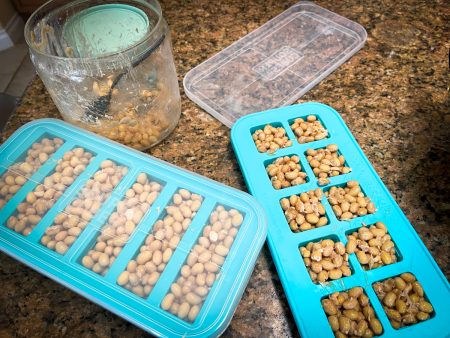
How Natto May Help Your Heart and Improve Blood Pressure
Bacillus Subtilis
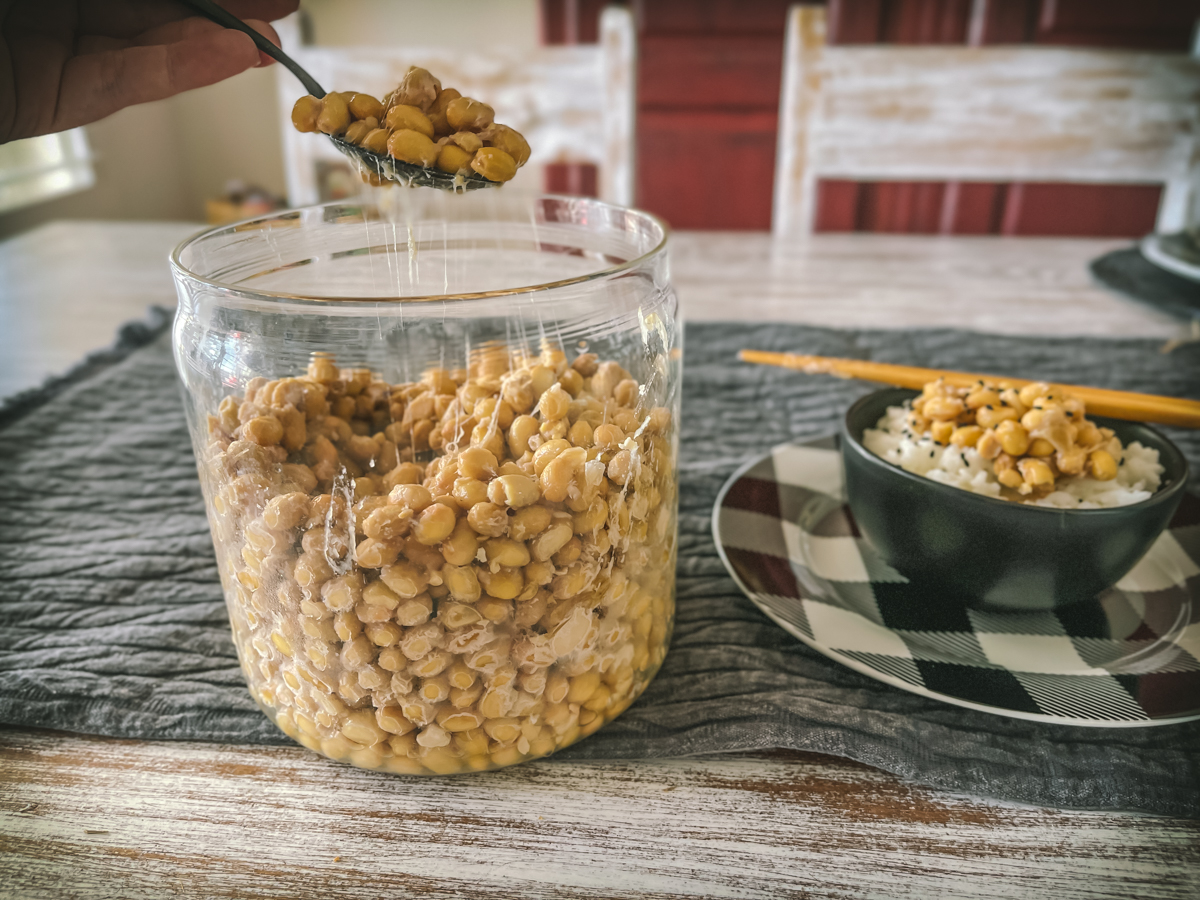
Natto is a superfood and one that I have been wanting to make for decades. It was hard to find the culture, and I wasn't sure that I wanted to eat soybeans since they're a little controversial. But that all changes with the magic of fermentation. In Japan, it is eaten every day and the health benefits are huge, and rightfully so. The microbe Bacillus subtilis (B. subtilis) is responsible for making this soybean dish and B. subtilis has been around for a long time. It's one of the oldest bacteria on planet earth and it spans the globe.
In this great book by Kristen Shockey: Miso, Tempeh, and Natto she talks about how they have found B. subtilis in the digestive systems of all creatures who dwell on earth and even in the tiny tummies of 40-million-year-old bees.
"B. subtilis is one of the most dominant bacteria in the honeybee stomachs and it is believed to be the key to the bees' ability to process nectar from flowers into honey."
What it does for humans in terms of health benefits is huge! It has an unusual bland taste that is similar to strong cheese and some don't like it. I can help you with all of that. Heat can't kill this microbe unless it's held at a high temperature of 270°F for several hours. Its appearance looks like stringy cheese threads, but you can mix it with foods like rice and stir frys. The heat gets rid of the stringyness and it also takes on the flavor of the food it is paired with. Sometimes it can get a slight ammonia smell which disappears after being stored in the fridge. It stores easily and stores best in the freezer. You can freeze it in small serving amounts and consume it as often as you want.
Health Benefits
Nattokinase
In 1987, Dr. Hiroyuki Sumi analyzed natto. The characteristic gooey substance on natto is loaded with an enzyme called nattokinase. It is a natural blood thinner that helps to dissolve fibrin and plasmin substrate in our blood which can cause abnormal thickening. This can lead to high blood pressure, strokes, and cardiovascular problems. Natto is the only food source of nattokinase, but you can also buy it as a supplement which is also used to help lower blood pressure, prevent strokes, and keep the heart healthy. [2,5 ]
Studies show that nattokinase dissolves blood clots — which helps maintain good blood vessel structure, improves blood flow, and lowers the risk of heart disease. By lowering blood pressure, it reduces strain on the heart that can lead to heart attacks. [3,4,5,6,7]
The stickiness of natto is mucin and polyglutamic acid. Mucin is a muco-protein that coats the bacteria and protects them from being killed in your stomach acids and making it to the digestive system where it does its magic. It coats the stomach lining helping your immune system to stay strong by keeping out pathogens.
 Nattokinase is a powerful blood thinner so it's not for those who are already on blood thinners.
Nattokinase is a powerful blood thinner so it's not for those who are already on blood thinners.
Vitamin K2
Vitamin K2 is produced by bacteria in your gut and is in kefir, krauts, miso, and certain cheeses. Natto has the most K2 of all fermented foods. It has 15 times more K2 than most cheeses and 200 times more K2 than sauerkraut.
More studies have shown that vitamin K2 helps us to move calcium into the bone — getting it out of our bloodstream where we don’t want it to accumulate in our arteries. Natto bacillus contains a large amount of water-soluble vitamin K (MENAQUINONE-7) which is the most beneficial for bone health.
Published, peer-reviewed, scientific studies in Japan have shown that post-menopausal women who eat at least four servings of natto weekly show significantly reduced rates of bone density decline—in some cases back to premenopausal levels.[8]
Another study found that post-menopausal women who eat natto daily had up to 49% lower risk of osteoporosis-related bone fractures.[9,10]
Good for Brain Health
Nattokinase, with its ability to dissolve fibrin, may also help dissolve fibrils which has implications in Alzheimer's disease. Good blood flow for the heart can also mean good blood flow for the brain. Fibrinogen is the blood protein that increases the risk of forming blood clots. and nattokinase can decrease the levels of fibrinogen in our blood. Nattokinase also supports healthy blood clotting by activating our body’s own natural enzymes that break apart blood clots after they’re already formed. Healthy circulation and improved blood flow can protect the brain from being starved of oxygen when dangerous blood clots form. A 2004 study of nattokinase in stroke patients found that it showed a clear protective effect. [11]
Problems with Soy
I have never been a fan of soy that is not fermented. There is a lot of controversy about soy. Some say it prevents cancer and others say that you shouldn't consume it because of the phytoestrogens that could make it worse. In my own experience, when I drank un-fermented soy milk it affected my thyroid; and when I stopped drinking it, my thyroid went back to normal. Fermented soy is very different, and I have never had problems with fermented tofu, natto, miso, or tempeh. When soy is fermented, it breaks down the isoflavones, and fermentation changes almost any food into a new food be it dairy, vegetables, or soy. Fermentation breaks down phytates, adds vitamins and minerals, and allows for easier digestion along with flooding the food with billions of probiotics. It is quite amazing and one of the great wonders of the world.
How To Make Natto
Fermented Natto
Equipment
- 1 Instapot or a large pan for boiling on the stove
Ingredients
- 450 grams Organic soybeans - 2 ¼ - 2 ½ cups
- 1.5 grams Natto Starter - about 1 teaspoon or slightly more
Every ingredient with a link was selected by me to make it easier for you. I may receive a small affiliate commission if you buy something through my links. Thank you! ❤️
Instructions
Soaking and Preparing
Cooking the soybeans
- Pressure cooker: Place the soybeans in a pressure cooker, cover with water, and cook on high pressure for 30 minutes, or until beans are soft and can squish between your fingers.Stovetop: You can also cook them on the stove in a pot - cover with water and cook until the beans are soft and easy to squish between your fingers. Cook for around 2 ½ to 3 hours.
- Sterilize your yogurt making jar and utensils for fermenting by pouring boiling water over them to make sure no other bacteria will be competing with the natto culture.
Making Natto Solution
- Natto bacteria require oxygen to survive and reproduce, so do not put the inner lid on the jar. Place the open jar into the water bath then put the clear cover lid on the maker. The cover lid has ventilation holes allowing oxygen in. Set the temperature to 110°F and the timer to 24 hours and then press confirm.
- Condensation will have collected under the cover lid. Please take care removing it and be careful not to get water in the natto. At first, the natto might have a strong ammonia smell, (mine did not) but this will subside with a second fermentation by placing it in the fridge. Stir the beans and check the stringiness which is a sign of good fermentation.
- Place the lid on the jar and transfer the fermented beans to the fridge. This is the second fermentation and will increase the signature stringy texture and reduce the ammonia smell. By resting the beans in the fridge for a day, the amino acid composition of soy protein will enrich the flavor of natto.
Storage
- Homemade natto will last 5-7 days in the fridge. If you are not planning to eat immediately, keep it in a freezer. When it is stored in the fridge, a white rough substance will start to grow which will give it a strong smell and texture. Portions of natto can be stored in the freezer for up to 2 years and you can thaw them and make more natto, or freeze them in small portions to eat more frequently. Just thaw in the fridge when you are ready to eat it.
Reculturing
- A third of a cup of this natto can be used as a substitute for natto starter on your next batch. Simply follow the same steps, but when it comes to adding the leftover natto, just stir it into your cooked soybeans in place of the natto solution. You can do this up to three times before the natto loses its fermentation ability. If it is not getting stringy, you need to use a new natto starter.

Listen To My Podcast
Natto is a superfood that I have been wanting to make for decades. It's fun to make and the health benefits for help with preventing high blood pressure and strokes are huge, not to mention the huge amounts of Vitamin K2 it contains. Tune in to learn more about how to make this superfood!
References:
- https://pubmed.ncbi.nlm.nih.gov/3478223/
- https://www.ncbi.nlm.nih.gov/pmc/articles/PMC5372539/
- https://pubmed.ncbi.nlm.nih.gov/26740078/
- https://www.webmd.com/diet/health-benefits-nattokinase
- https://www.ncbi.nlm.nih.gov/pmc/articles/PMC5372539/#B10-ijms-18-00523
- https://www.ncbi.nlm.nih.gov/pmc/articles/PMC5066864/
- https://pubmed.ncbi.nlm.nih.gov/26109079/
- https://jn.nutrition.org/article/S0022-3166(22)08249-9/fulltext
- https://jn.nutrition.org/article/S0022-3166(22)02079-X/fulltext
- https://pubmed.ncbi.nlm.nih.gov/31825069/
- https://www.nbihealth.com/top-reasons-to-take-nattokinase/
Are you on the list?
Sign up today and I'll send you my free Getting Started Guide!
Each week I'll send you updates, tips, recipes, and more! You might even be a winner of my weekly giveaway! (starter cultures, memberships, and more!)
Come be a part of my cultured food family!

